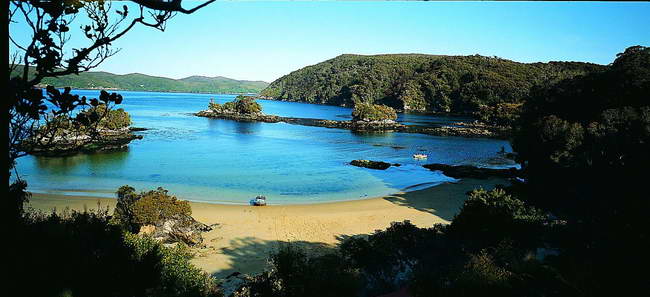 Last week we had a second public meeting at the Stewart Island Community Hall at Oban. It was a good vibe. What are we up to?
Last week we had a second public meeting at the Stewart Island Community Hall at Oban. It was a good vibe. What are we up to?
In 2008 in response to constant enquiry, DOC carried out a preliminary assessment of making Stewart Island/Rakiura predator-free. There are three predators there – possums, feral cats and rats. The 170,000 ha island is home to Rakiura National Park, contains large tracts of primary forest, and is the site of the township of Oban, with resident population of 420. Making Stewart Island/Rakiura predator-free will be a world first in terms of the size of the project and the fact it includes a permanent community. A project of such a scale is likely to achieve UNESCO World Heritage accreditation.
In 2012 the Morgan Foundation and Department of Conservation agreed to re-invigorate the evaluation process by updating the scoping work and engaging the local community to confirm support for the concept. That second report is now available, its findings include:
- The project is best considered as two projects, one of the area extending from Halfmoon Bay to the Rakiura Track (about 5,000 ha) and then the rest of the island. The two projects would be separated by a 12km predator proof fence possibly running from Maori Bay to North Arm.
- It is considered that carrying out the Halfmoon Bay eradication first is preferable for a number of reasons:
- The technology for the large scale eradication needs further development. The largest island eradication to date is Campbell Island at 11,000 ha, the big Stewart Island/Rakiura project is an altogether different order of magnitude and a quick one-off eradication isn’t deemed feasible. Rather, alternatives such as a zone-by-zone approach are being considered, but the technology for low maintenance trap-line defences to protect a zone from re-invasion have yet to be developed.
- While the ecological benefit is greatest from the large project the economic and social benefits for the island can in significant part be achieved from completion of the Halfmoon Bay project. The eradication techniques applicable to this project are all known and tested.
- Completion of the Halfmoon Bay project will enable the practice of ongoing border biosecurity to be developed and perfected without threatening the gains from the eradication of the larger project.
The benefits from the Stewart Island/Rakiura Treasure project are considered to include:
- Significant economic gains from tourist visitation, particularly from special interest groups focussed around biodiversity assets – the benefit of being a global visit destination for such communities of interest as ornithologists, ecologists, biologists as well as trampers is significant given that combined global tourism numbers from these special interest communities exceed 3 million per annum.
- Social benefits for the community of Oban as its population starts to grow, along with its school roll and the viability of services such as health and electricity.
- An enhancement of New Zealand’s reputation for pristine environments and with that economic benefits in the form of tourism, immigration of talent and price premiums for products made in New Zealand.
- A substantial ecological dividend from enhancing the natural capital of Stewart Island /Rakiura is promised – with so much primary forest and native species the island is a treasure of indigenous species. Unique forest, shrubland, alpine, grassland, coastal and wetland ecosystems cover the islands of the Stewart Island/Rakiura region. Threatened species within the islands include the Stewart Island fernbird, yellow-crowned parakeet, kereru, kaka, Stewart Island weka and Stewart Island robin. Yellow-eyed penguin, red-crowned parakeet, Southern New Zealand dotterel, South Island saddleback and Stewart Island brown kiwi are also in residence. Invertebrate species unique to the island also exist. Post eradication there would also be opportunities to reintroduce threatened species to the island, such as kakapo.
Next Steps
The immediate plan is to now establish a Governance Group for the project that with comprise the local community, businesses and landowners, councils, DOC, and funders who will be responsible for progressing the project from here. The Governance Group’s first task will be to work through the details of the predator proof fence and the manner of the eradication for the Halfmoon Bay project – as yet no decisions have been made. The Governance Group is expected to form a number of Working Teams which will include relevant specialists to progress all technical and social matters relevant to achievement of the goal.
Eliminating Predators From Stewart Island New Zealand

